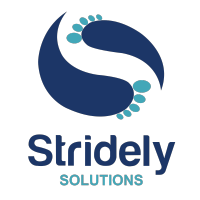The world of e-commerce is experiencing exponential growth, with a projected market value of $27.15 trillion by 2027, boasting a Compound Annual Growth Rate (CAGR) of 14.7%. The widespread adoption of online browsing and purchasing, especially through mobile devices, has fueled this remarkable expansion, and recent events, such as the global pandemic, have further accelerated this phenomenon.
Among the myriad factors driving the remarkable growth of e-commerce, the delivery of exceptional user experiences and top-notch customer experiences (CX) stands out. This is particularly true in the retail industry, where establishing an omnichannel presence and providing a unified experience for customers are crucial for success.
In the face of such complexity, the need for Headless Commerce architecture becomes increasingly apparent. This architecture enables businesses to implement efficient CX strategies that cater to users across multiple channels, devices, and interfaces, all without compromising backend functionality.
However, in the realm of headless commerce, there isn’t a single centralized platform to manage it all. Instead, there is a multitude of disparate sources that must be unified to ensure a seamless customer experience. It is here that the power of SAP Commerce Cloud Composable Storefront (also known as Spartacus) truly shines.
Also Read: Dynatrace for SAP Hybris – The Arrival of the Commerce Cloud Monitoring Age
In this blog, we will explore the headless e-commerce architecture in SAP Commerce Cloud. We will delve into the features, benefits, and functionalities of this architecture, highlighting how SAP Commerce Cloud leverages headless principles to enable businesses to create outstanding e-commerce experiences. Let’s dive in and discover how headless architecture and SAP Commerce Cloud combine to provide a robust foundation for modern e-commerce success.
What is Headless e-commerce architecture?
Headless e-commerce architecture, at its core, involves the separation of the frontend from the backend. Unlike traditional monolithic architectures, where the presentation layer is tightly coupled with the underlying system, headless architecture allows businesses to break free from the limitations of predetermined frontends. With headless architecture, companies gain the freedom to design and tailor their desired front-end experiences to meet their unique brand identity and customer needs.
What sets headless architecture apart is its lack of rigid guidelines for content presentation. Unlike traditional architectures that prescribe specific rendering methods, headless architecture provides flexibility by decoupling content delivery from its presentation. Instead, it relies on APIs (Application Programming Interfaces) to connect the frontend and backend, enabling content to be delivered to any device, anywhere, while ensuring a seamless and engaging user experience.
APIs serve as the bridge between the front end and backend, facilitating smooth communication and data exchange. By utilizing APIs, businesses can leverage the vast array of possibilities offered by headless architecture. They can tap into the power of SAP Commerce Cloud’s backend capabilities while crafting captivating frontends that resonate with their target audience. This dynamic approach empowers businesses to adapt to changing market demands swiftly and deliver personalized experiences that drive customer satisfaction and loyalty.
Key Features of Headless Architecture
-
Use APIs to Connect Frontend and Backend
By leveraging APIs, the headless architecture enables seamless communication between the frontend and backend systems. This allows for flexible and modular development, where different components can be developed independently and integrated using APIs.
-
Multi-Channel Experience
With headless architecture, businesses can create and manage digital experiences across multiple channels, such as websites, mobile apps, social media platforms, IoT devices, and more. This ensures a consistent and engaging user experience across various touchpoints.
-
Easy Integration with Open-Source, Custom-Built Technologies, and Third-Party Systems
You’re not limited to a specific set of tools anymore. Headless architecture lets you easily integrate open-source, custom-built, and third-party systems. It’s like having a toolkit that adapts to your needs. Choose the best tools available and build the ultimate e-commerce machine!
Also Read: FedEx Integration in SAP Hybris eCommerce – Everything you need to know about it.
-
Support for Multiple Frameworks and Languages
Headless architecture is framework-agnostic, meaning it supports multiple frontend frameworks and programming languages. This provides developers with the freedom to choose the most suitable tools and technologies for their specific requirements and expertise.
-
Content Creation, Editing, and Management for Marketers and Creators
Headless architecture makes it a breeze to create, edit, and manage composable content. Imagine building content like Lego blocks, where you can easily assemble and personalize it across various channels. Let your creativity flow!
-
Composable Commerce
Flexibility is the name of the game. Headless architecture supports composable commerce, allowing you to customize your e-commerce experience to meet your unique business goals. Mix and match different commerce capabilities like product catalogs, shopping carts, and payments.
With its flexible, scalable, and future-proof nature, headless architecture is the secret sauce for building remarkable e-commerce experiences that captivate your customers.
Headless Commerce Benefits
- Headless architecture allows developers to utilize the frontend framework of their choice, empowering them to build highly customized digital experiences.
- By decoupling the frontend and backend, headless implementation adds an extra layer of security, protecting platforms from potential malicious attacks.
- Headless architectures often receive regular updates, reducing potential risks and vulnerabilities compared to traditional CMS platforms.
- Brands have complete ownership and control over their site architecture with headless commerce.
- Improved conversion rates and lower customer acquisition costs are possible with optimized user experiences in headless commerce.
- Enables businesses to achieve infinite scalability in hosting resources, allowing them to handle increased traffic without incurring substantial costs.
The SAP Commerce Cloud Advantage
SAP Commerce Cloud offers several key benefits that make it an exceptional e-commerce solution:
-
Leveraging Frontend Frameworks:
SAP Commerce Cloud as a headless e-commerce solution allows developers to leverage their preferred frontend frameworks. This flexibility enables them to utilize modern frontend technologies, such as React, Angular, or Vue.js, to create highly interactive and visually appealing user interfaces.
-
Extensibility:
It offers extensive extensibility features, allowing businesses to customize and tailor their e-commerce experience. It enables users to configure and customize pages and components, adjust configurations, create custom themes, and utilize dependency injection to customize business logic.
Also Read: SAP Hybris Migration to Commerce Cloud Version 2 — The Process, Advantages, Cons and more…
-
Upgradability and Regular Updates:
It is designed to be upgradable, providing template-based code generators and scripts to handle upgrade tasks efficiently. This ensures that businesses can stay up to date with the latest enhancements and fixes without the hassle of extensive manual adjustments.
-
Performance:
SAP Commerce Cloud prioritizes performance optimization to deliver fast and responsive websites. It incorporates mechanisms like above-the-fold loading, server-side rendering, deferred loading, lazy loading techniques, and caching to enhance speed, improve user experience, and boost search engine rankings.
-
Decoupled Architecture:
SAP Commerce Cloud follows a decoupled architecture, allowing frontend and backend teams to work separately and independently. This separation enables increased productivity, scalability, and specialization by leveraging separate deployment and release cycles. It also offers flexibility to connect with other systems through connectors.
Conclusion
Adopting a headless e-commerce architecture with SAP Commerce Cloud brings numerous benefits, including extensibility, upgradability, performance optimization, and a decoupled architecture. However, to fully leverage the potential of SAP Commerce Cloud, partnering with a trusted SAP Commerce Cloud Services Provider like Stridely Solutions can enhance the implementation process and maximize the benefits.
As a leading SAP Commerce Cloud Services Provider, Stridely Solutions offers expertise in designing, developing, and managing SAP Commerce Cloud solutions tailored to businesses’ unique requirements. With our in-depth knowledge and experience, we can assist you in leveraging the extensibility and customization features of SAP Commerce Cloud, ensuring a seamless integration with existing systems and third-party technologies.


